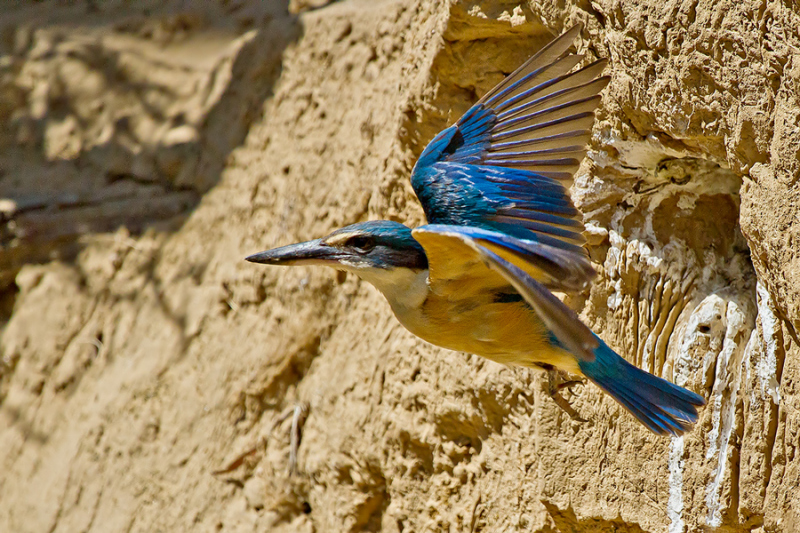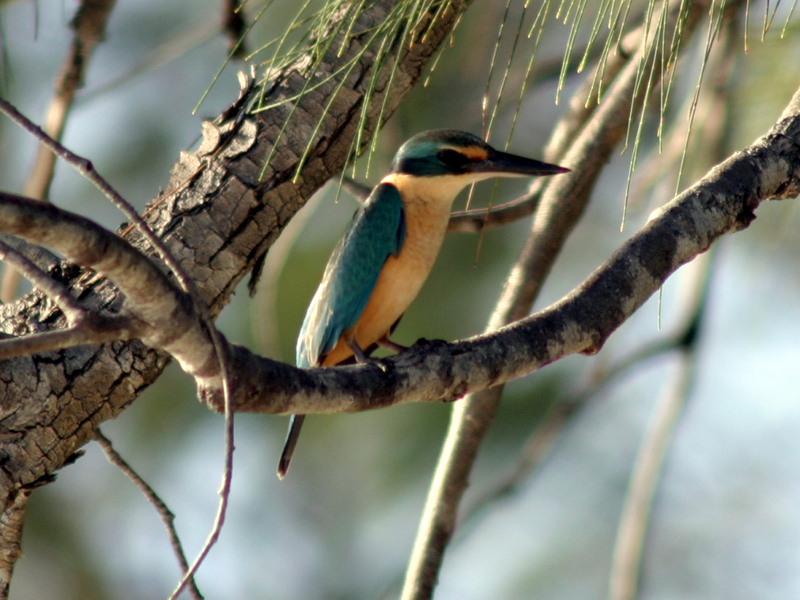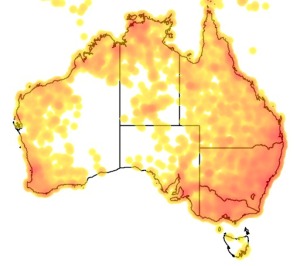
©Patrick_K59 on Flickr: Sacred Kingfisher (Todiramphus (Todiramphus) sanctus) flying from its nest site.
Colours
Distinguishing features
They are mostly turquoise, with white underparts and collar feathers. Both sexes are similar, but females are usually more dull colored. Juveniles have rusty-brown edges on the collar and underparts. (Wikipedia)
Size
- Up to 23 cm (Length of specimen)
Wingspan
- Wingspan data is not yet available.
Synonyms
Distribution
Distribution and habitat preferences
They are found in Australia, New Zealand, Lord Howe Island, Norfolk Island, New Guinea, eastern Indonesia, much of northern and western Melanesia, and the Kermadec Islands.
Populations in the southern two-thirds of Australia migrate northwards at the end of breeding season to New Guinea, east to the eastern Solomon Islands and west to Indonesia becoming uncommon to very sparse as west as Sumatra. Birds move south again to Australia in August to September. They have also occurred as vagrants on Christmas Island, Malaysia, the Marshall Islands, the Federated States of Micronesia, and Nauru.
In Australia, they occur in eucalypt forests, melaleuca forests, woodland and paperbark forests. In New Zealand, they shows altitudinal migration, with post-breeding movement from higher altitudes to the coast and also from forest to coast and open lands. (Wikipedia)
Local abundance
- Cape Kidnappers, New Zealand: abundant
Audio recordings
Behaviour
Once a pair of birds has mated, both members of the pair dig the nest, usually a burrow in a river bank or a large, empty branch. The female lays about five eggs, and both birds incubate the eggs and take care of the young. (Wikipedia)
Diet
It feeds on insects, small crustaceans, fish, small rodents and reptiles, and there are a few reports of them eating small finches. Usually, a bird will sit on a low branch and wait for prey to pass by. It swoops down to grab the prey and returns to its perch to eat, much like a hawk. (Wikipedia)
Web resources
References
- Simpson, K., N. Day and P. Trusler (1996). Field Guide to the Birds of Australia: Fifth Edition Penguin Books, Australia.


